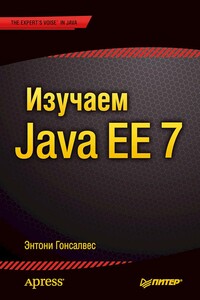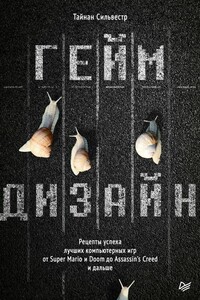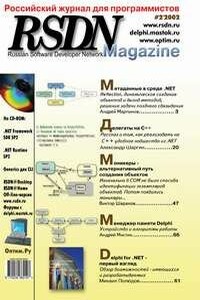DirectX 8. Начинаем работу с DirectX Graphics - [14]
>D3DXMATRIX M = M1 * M2 * M3 * M4;
>g_pd3dDevice->SetTransform(D3DTS_WORLD, &M);
But, remember that the product of matrix multiplication is dependent on the order of the operands. For instance, Rotation * Position will move the panel and then rotate it. Position * Rotation will cause an orbiting effect. If you string together several matrices and get unexpected results, look closely at the order.
As you become more comfortable, you may want to experiment with things like the texture matrix, which will allow you to transform the texture coordinates. You could also move the view matrix to affect your coordinate system. One thing to remember: locks are very costly, always look to things like matrices before locking your vertex buffers.
Looking at all the code listed here, this is really a long, drawn out way to do a blit, but the nice thing is that most of this can be wrapped into tidy functions or classes that make all this a one time cost for long term benefit. Please remember that this is presented in a very bare bones, unoptimized way. There are many ways to package this to get maximum benefit. This method should be the optimal way to create 2D applications on current and coming hardware and also will pay off in terms of the effects that you can implement very easily on top of it. This approach will also help you blend 2D with 3D because, aside from some matrices, the two are the same. The code was easily adapted from 2D work that I did in OpenGL, so you could even write abstract wrappers around the approach to support both APIs. My hope is that this will get people started using DX8 for 2D work. Perhaps in future articles I will talk about more tricks and effects.
DirectDraw The Easy Way
This article describes how to setup DirectDraw displays and surfaces with minimal effort using the common libs included in the DirectX SDK. This can be particularly helpful for those who want a quick way of doing things, while still maintining control of their application's basic framework. Please note the fact that these classes abstract quite a few things, and I highly recommend peering into their functions at some point to see how things are done on a lower level.
For this article, I'm assuming you have Microsoft Visual C++, and the DirectX 8.1 SDK. If not, please adapt to portions of this article accordingly. Anyway, start up Visual C++, and create a new Win32 Application project. Then go into your DirectX SDK's samples\multimedia\common\include directory, and copy dxutil.h and ddutil.h to your project folder. Then go to samples\multimedia\common\src, and do the same with dxutil.cpp, and ddutil.cpp. Add the four files to your project, and link to the following libraries: dxguid.lib, ddraw.lib, winmm.lib. Now, you create a new C++ source file document, and add it to your project as well. This will be the file we'll work with throughout the tutorial.
Now that we've got that out of the way, we can get down and dirty with some actual code! Let's start off with this:
>#define WIN32_LEAN_AND_MEAN
>#include
>#include "dxutil.h"
>#include "ddutil.h"
Standard procedure here. We #define WIN32_LEAN_AND_MEAN, so all that icky MFC stuff doesn't bloat our program (just a good practice if you aren't using MFC). Then we include dxutil.h, and ddutil.h, the two centerpieces of this article. They provide shortcut classes to make programming with DirectX in general less taxing.
>//globals
>bool g_bActive = false;
>CDisplay *g_pDisplay = NULL;
>CSurface *g_pText = NULL;
>//function prototypes
>bool InitDD(HWND);
>void CleanUp();
>void GameLoop();
Pretty self explanatory. Our first global, g_bActive, is a flag to let our application know whether or not it's okay to run the game. If we didn't have this flag, our application could potentially attempt to draw something onto our DirectDraw surface after it's been destroyed. While this is usually a problem at the end of the program where it isn't that big of a deal, it generates an illegal operation error, and we don't want that, now do we? g_pDisplay is our display object. CDisplay is the main class in ddutil. It holds our front and back buffers, as well as functionality for accessing them, drawing surfaces onto them, creating surfaces, etc. g_pText is our text surface. We will draw text onto this surface (as you've probably figured out), and blit it onto our screen. Note how both objects are pointers, and are initialized to NULL.
Now for the function prototypes. InitDD() simply initializes DirectDraw. Thanks to the DDraw Common Files, this is a fairly simple procedure (but we'll get to that later). CleanUp() calls the destructor to our g_pDisplay object, which essentially shuts down DDraw, and cleans up all of our surfaces. GameLoop() is obviously where you'd put your game.
>LRESULT CALLBACK WndProc(HWND hWnd, UINT uMsg, WPARAM wParam, LPARAM lParam) {
> switch(uMsg) {
> case WM_CREATE:
> InitDD(hWnd);
> g_bActive=true;
> break;
> case WM_CLOSE:
> g_bActive=false;
> CleanUp();
> DestroyWindow(hWnd);

Java Enterprise Edition (Java EE) остается одной из ведущих технологий и платформ на основе Java. Данная книга представляет собой логичное пошаговое руководство, в котором подробно описаны многие спецификации и эталонные реализации Java EE 7. Работа с ними продемонстрирована на практических примерах. В этом фундаментальном издании также используется новейшая версия инструмента GlassFish, предназначенного для развертывания и администрирования примеров кода. Книга написана ведущим специалистом по обработке запросов на спецификацию Java EE, членом наблюдательного совета организации Java Community Process (JCP)

Что такое ГЕЙМДИЗАЙН? Это не код, графика или звук. Это не создание персонажей или раскрашивание игрового поля. Геймдизайн – это симулятор мечты, набор правил, благодаря которым игра оживает. Как создать игру, которую полюбят, от которой не смогут оторваться? Знаменитый геймдизайнер Тайнан Сильвестр на примере кейсов из самых популярных игр рассказывает как объединить эмоции и впечатления, игровую механику и мотивацию игроков. Познакомитесь с принципами дизайна, которыми пользуются ведущие студии мира! Создайте игровую механику, вызывающую эмоции и обеспечивающую разнообразие.

В книге рассказывается история главного героя, который сталкивается с различными проблемами и препятствиями на протяжении всего своего путешествия. По пути он встречает множество второстепенных персонажей, которые играют важные роли в истории. Благодаря опыту главного героя книга исследует такие темы, как любовь, потеря, надежда и стойкость. По мере того, как главный герой преодолевает свои трудности, он усваивает ценные уроки жизни и растет как личность.

В книге рассказывается история главного героя, который сталкивается с различными проблемами и препятствиями на протяжении всего своего путешествия. По пути он встречает множество второстепенных персонажей, которые играют важные роли в истории. Благодаря опыту главного героя книга исследует такие темы, как любовь, потеря, надежда и стойкость. По мере того, как главный герой преодолевает свои трудности, он усваивает ценные уроки жизни и растет как личность.

В книге рассказывается история главного героя, который сталкивается с различными проблемами и препятствиями на протяжении всего своего путешествия. По пути он встречает множество второстепенных персонажей, которые играют важные роли в истории. Благодаря опыту главного героя книга исследует такие темы, как любовь, потеря, надежда и стойкость. По мере того, как главный герой преодолевает свои трудности, он усваивает ценные уроки жизни и растет как личность.

Python - объектно-ориентированный язык сверхвысокого уровня. Python, в отличии от Java, не требует исключительно объектной ориентированности, но классы в Python так просто изучить и так удобно использовать, что даже новые и неискушенные пользователи быстро переходят на ОО-подход.